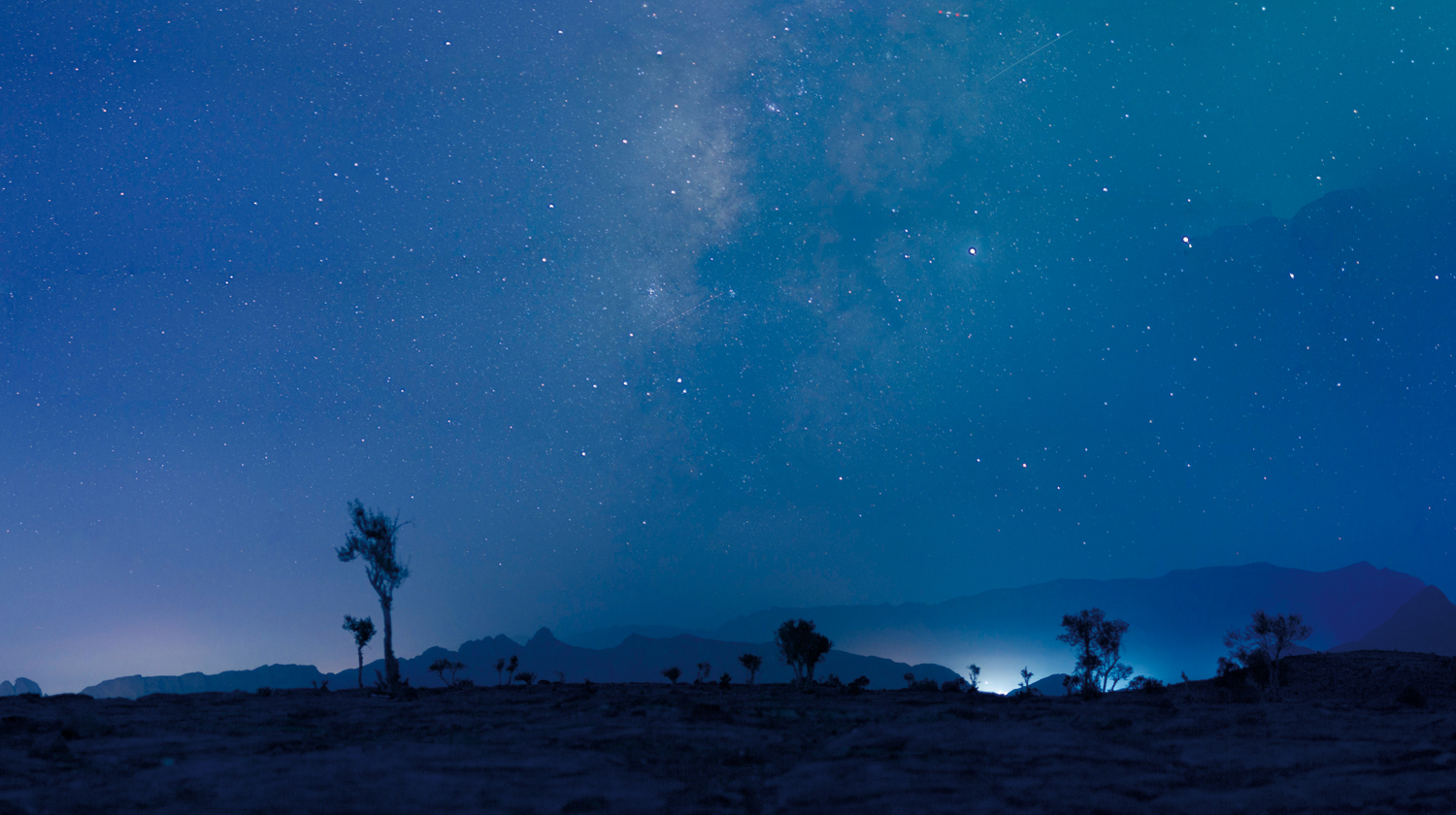

Oman is the first in the region to host a nature reserve for stargazing. This has been the headline of major newspapers a month back as His Majesty Sultan Qaboos released Royal Decree No. 40/2019 establishing Al Hajar Gharbi Star Lights Nature Reserve in the Governorate of Al Dhakiliyah.
This establishes Oman’s superiority when it comes to looking after its environment and natural resources. In a world that continues to battle light pollution, the Royal Decree guarantees close scrutiny of the developments happening in the section of Oman covered by the reserve.
Prior to the announcement, many residents of Oman, particularly those who dabble in photography are already aware of how magnificent its night sky is. The declaration not only renewed interest in night photography but also re-ignited the discussions of the best places in the country to shoot the night sky.

“My favourite location for shooting the stars is Jabal Shams. I have always witnessed clear skies every time I point my camera up at the stars there,” shared Faisal, an active member of photography interest club Friday Shoot-Out (FSO) Muscat.
This has been seconded by fellow member Arvind Bhandare who said that “approximately 25km from Jabal Shams Resort towards Muscat, you will find some rocky area on the left side of the trail. Here you will get beautiful foreground with trees and rocks to shoot the Milky Way and the star trail,” he said.
Michael D Souza, one of the organisers of FSO also said that “Jabal Shams has a better foreground with the Juniper trees and could be interesting when light painted or as a silhouette,” but added that Jebel Shams just like Rimal al Sharqiya has started to become problematic “due to many resorts and hotels in operation there. Also one has to wait and shoot late, anticipating that the resort/hotel bright lights illuminating the surroundings are reduced late in the night. Such lights give an orangish/yellow glow on the horizon in every picture.”
“In Oman, the biggest issue to overcome is that there is a lot of light pollution almost everywhere — in the mountains, near the cities, the wadis, the desert, everywhere,” pointed French student in Muscat Raphaël Sclear.
“I’m a photography lover and I especially grew fond of night photography. Because of light pollution, it is becoming to be more and more difficult to make night shoots. There’s just too much light pollution,” he said.
But unlike other more developed countries in the world, Oman is not only gifted with Jabal Shams but other locations as well.
“I have been continuously chasing the Milky Way since last season. Together with my other friends, we have visited at least 12 locations in Oman to get better photos with less light pollution,” shared Ajayan Poyyara, also an active member of FSO.
“With the help of an LPM map (an app showing light pollution) and the app Photopills, we are able to locate the position and visibility details of the Milky Way and Galactic Centre,” he added.

“Other than Jabal Shams, my top three would be Kuwaima located in the Al Sharqiya region which is about 350km from Muscat. There is very little light pollution and it is close to the sea. You can also get sand dunes and mountains as foreground; Al Qriah village in Rustaw which is around 250 km from Muscat. Because of its remote location, the sky is the darkest. You also have mountains and wadis on either side so it allows for flexibility; the third for me is the Village Bar Ajban, along the connecting road of Adam- Sinaw. It is a very interesting place and comparatively less polluted. From here, we can see the full hemisphere of the sky,” Ajayan recommended.
“I found a great location in the middle of Rimal al Shariyah and definitely thinks that it’s amazing in the Empty Quarter. One can also go to Masirah Islands since it allows for great composition,” shared Raphaël.
“These remote locations have different challenges. In the desert, there are venomous spiders and scorpions. Even the mosquitoes are a real challenge. You can also face a sand storm if you go to the desert. My favourite locations are Sinaw to Adam - Road No 27 where the trees on the foreground are very nice in contrast to seeing the Milky Way in the horizon; the road between Ibri and Rustaq where there are beautiful mountains and wadi areas with zero light pollution and; of course, Jabal Shams.”
“The season for astrophotography starts from the second half for the year, from June to December, as the Milky Way rises in the night in the Northern Hemisphere. Best stars pictures are taken when there is no moon on the sky or after the moonset in the night,” shared Michael.
Oman Observer is now on the WhatsApp channel. Click here



